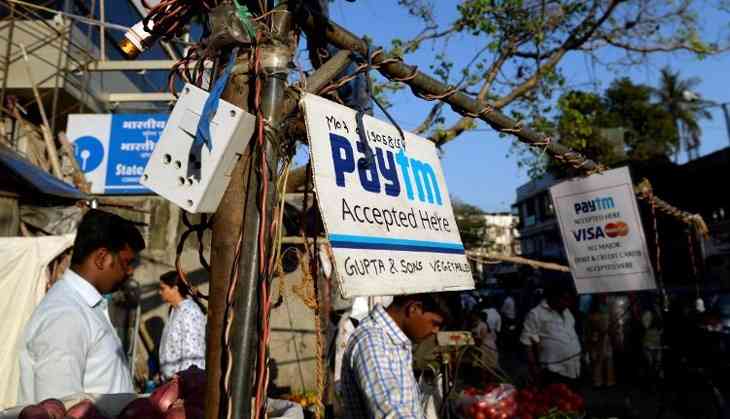Paytm's full-fledged messaging feature set to fail against the WhatsApp juggernaut

Both Hike and WhatsApp wanted a piece of Paytm's pie by integrating a payment feature into their messaging apps. Now, Hike has done it, with WhatsApp set to follow suit. However, in this season of stolen USPs, Paytm’s attempt to get its own back is likely to flop.
Paytm, India's largest mobile wallet company, has announced that it will integrate a full-fledged messaging feature into their own app by the end of August.
Monetisation matters
Ever since the Modi government's demonetisation move in November, 2016, Paytm's user base has surged. So much so that it now boasts over 225 million users on its wallet app.
For WhatsApp and Hike, Paytm’s success highlighted a glaring business opportunity. Both companies currently have no ways to monetise their respective user bases, and a payment wallet would solve that. WhatsApp’s previous attempt at revenue – switching to a subscription fee model, was dropped in 2016. Since then, WhatsApp has not charged anyone any amount, and therefore not gained a penny for its services.
The demonetisation effect may be wearing off, but it is clear that the online payments market is set to take off. WhatsApp, which boasts of 200 million active users in India alone, could come into a cash windfall with a payment wallet.
Shooting the messenger
Paytm has had a chat feature since 2014, but that is far different than what it is planning now. That chat feature allowed for the customer to indulge in some real time bargaining with the vendors who were selling products via the Paytm platform.
This new 'chat feature' will essentially start off as a clone of WhatsApp, with text, image, audio and video messaging. In the short-term. What's more, Paytm plans to model their chat feature along the lines of China's most popular messaging app, WeChat. WeChat covers everything from ride-hailing, to media, to payments, to commerce, to basic messaging features and so much more.
Paytm will also work in close communication with brands' official accounts and connect them directly to the user. Paytm is allowing merchants to dictate how they market goods directly to the consumer. They'll then receive the payment digitally, negating the need for face-to-face interaction. There will be mobile games and other content as well. This will allow Paytm to go beyond what WhatsApp and Hike are at present.
Will it work?
There are just two reasons why Paytm will succeed in its new venture.
First, Paytm's parent company, One97 Communication, has a history in this very space. Back in 2006, it launched a subscription-based content service. Only four years later did it launch what is now its primary source of income, Paytm.
Second, Paytm's largest shareholder is Chinese company Alibaba. Remember that Alibaba missed out big in China to rivals WeChat and Tencent. WeChat is now eating into Alibaba's payment and commerce business and that is an increasing cause for worry. Alibaba’s experience could ensure Paytm doesn't make the same mistake.
However, WhatsApp launching peer-to-peer payments service in India is a much bigger deal. We already know that a lot of business' use WhatsApp to communicate with their consumers. In fact, smartphone manufacturers like Xiaomi tout the fact that their mobile phones can handle two WhatsApp accounts - personal and business - and that will work to their advantage. Connecting the last mile of payment is all that is needed to keep them on the platform.
We already know that WhatsApp's biggest market is India, and it's showing no signs of declining. Even Facebook Messenger has a large number of users in the country.
With most people's messaging habits already set in stone, while payment wallets are a fairly new phenomenon, it is easier to change behaviour and preference when it comes to wallets rather than messaging. Getting people to sign up, share their number, or create a username is a hassle. So to already have a large users base of 200 million plus is huge. Once people are connected to others on a messaging platform, they'd rather not move away. Just look at what happened with Google's two new messaging services - Allo and Duo - and how, many months after using it, not many people have abandoned WhatsApp for it. It's one thing to have a personal preference for a new service and it's another altogether to get all your friends whom you frequently communicate to also shift with you.
Paytm may have a larger base than WhatsApp currently does, but most of that comes down to demonetisation and how it was just there at the right moment. Paytm had already tied up with taxi-hailing service Uber (which is more popular than Ola in metropolitan cities), and the moment demonetisation hit, the users kept on coming in.
Simply put, luring someone from a messaging app that they've been embedded on for many months is much harder than saying goodbye to a payments service that most people use for only one or two services.
Finally, overextending oneself, like Paytm is doing, without any solid plan leaves their core business vulnerable. WhatsApp and Hike both know that even if their dabbling in other sectors doesn't pick up, its core service will not bleed users. So for WhatsApp and Hike to integrate mobile payments on their platform is a much smarter move than, Paytm trying to create a messaging feature within its own app.
First published: 2 August 2017, 22:12 IST

